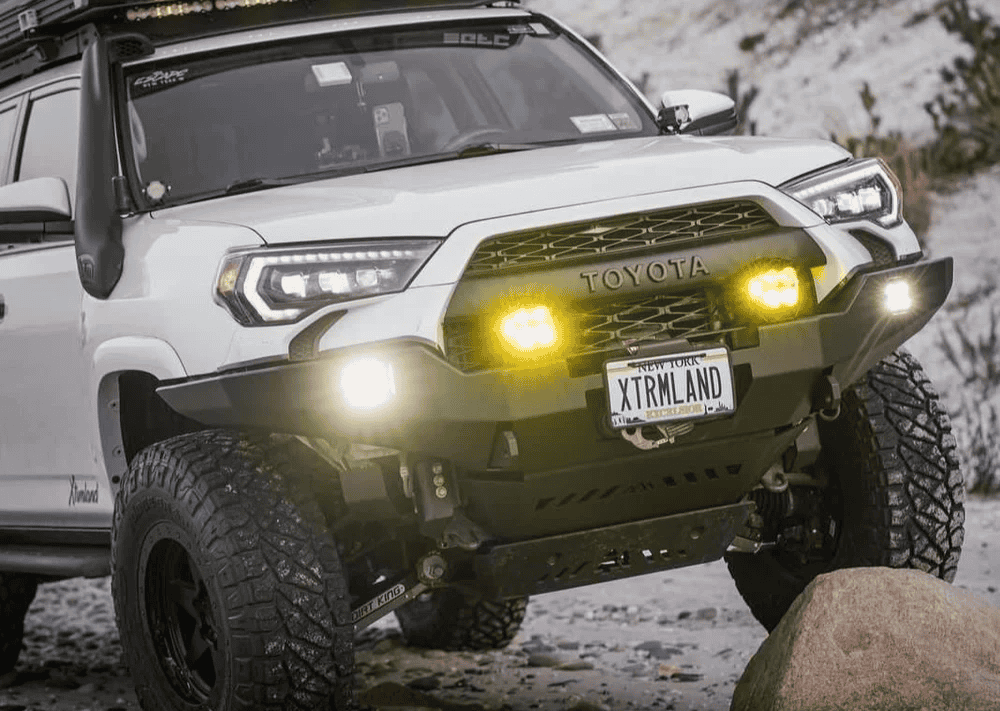Overland Vehicles

Beadlock wheels clamp the tire bead between a machined seat and an external ring with a circle of bolts. That clamping force keeps the bead from slipping even when you air down. Lower pressure lets the tread conform to rock and roots, lengthens the contact patch in sand, and softens impacts. Because the bead is captured, you can push to pressures that would normally peel a tire off the rim in off camber or high torque situations.
A true beadlock captures the outer bead with a separate ring and hardware. The inner bead seals against the wheel like usual or, on dual beadlock designs, both beads are mechanically secured. The result is predictable grip at very low psi and insurance against burping air during hard side loads. This design does add unsprung mass and requires periodic torque checks, but that tradeoff is accepted by drivers who need absolute traction.
Simulated rings are cosmetic and offer lip protection, but they do not clamp the bead. They can be great for daily use where you want extra rim armor and the look without hardware upkeep. True beadlocks use graded bolts and a torqued pattern to apply even pressure around the bead. They require staged torque, re checks after the first drive, and occasional inspection to keep the clamping consistent.
Rock gardens and ledges reward low pressure and a compliant footprint. Beadlocks allow you to drop psi until your sidewall acts like a soft shoe on stone, biting without skittering. In deep sand, a longer contact patch reduces sink and keeps the vehicle floating over soft surfaces. On cold, icy trails or snow, a deflated tire wraps obstacles and maintains drive where a stiff tire would spin.
Sidewall stability is another advantage. At very low psi, a conventional wheel can let the bead creep under lateral loads. A beadlock ring resists this movement. That stability means you can pick careful lines on off camber shelves without constantly bumping pressure back up to keep the bead safe. For vehicles with heavy spares or long wheelbases, the extra security reduces trail side downtime caused by bead pops.
Start with the load on each corner, tire size, and construction. A common approach is to step down in small increments, test steering feel and sidewall support, and stop before you feel the tire roll over the rim. In rocks, pressures in the teens are common for many setups, but heavy rigs or soft sidewalls may need more. After the trail, air back up before highway speeds to keep heat down and protect the casing.
Ring material and thickness influence durability. Steel rings resist rock rash but add weight. Aluminum rings save mass and still take abuse if thick enough, especially with a chamfer that guides the bead. Bolt count and size determine the clamping footprint. More fasteners spread load and reduce the risk of localized bead leaks. Use quality hardware, anti seize where appropriate, and a torque wrench in a star pattern over multiple passes.
Hub centric wheels align on the hub for a precise fit, which helps reduce vibration. Lug centric fitments rely on the lugs and require careful torque to seat evenly. Balancing can be done with traditional weights, internal beads, or a combination. Because beadlocks sometimes use heavy rings, extra care with balance pays off on the highway. Expect to recheck beadlock bolt torque after initial heat cycles and after significant impacts.
Street use rules vary. Some true beadlocks are not DOT approved for road use, while others are tested and marked accordingly. Always verify local requirements and understand how your tire pressure and load ratings interact with your route plan. The added weight of the ring increases unsprung mass, which impacts ride and braking. Address this with appropriate spring and damping rates, correct tire load index, and alignment settings that match your terrain goals.
Picking the correct wheel width for your tire, ensuring bead seat geometry is compatible, and matching offset to your suspension travel takes experience. A cohesive setup protects joints and bearings, guards bodywork at full stuff, and keeps steering happy on the highway. That complete picture is what turns beadlocks from a novelty into a real performance upgrade.
OZK Customs builds overland ready rigs that can take full advantage of beadlock traction while staying practical for daily miles. If you are planning a serious trail build, explore our overland rigs to see how we connect wheel and tire choices to suspension, gearing, and armor. For purpose built packages and fabrication that integrate wheel fitment with clearance, power, and onboard systems, visit our custom overland upfit page. Curious about our approach and why travelers from across the country ship or fly into Fayetteville Arkansas to pick up their rigs, learn more at why choose OZK Customs.
We started on the road and still design around real trail use. That means beadlock choices that suit your tire type, terrain mix, and how far you drive to reach the dirt. Tell us how you travel and what you want to conquer next. We will spec the right wheels, pressures, and supporting systems so the rig works as one.
Ready to build a rig you can trust on the worst trails and the longest drives home. Tell us how you travel. OZK Customs will map wheel fitment, tire choice, suspension, and gearing so your beadlocks work flawlessly on trail and remain practical for your life.
ADDRESS:
6159 E Huntsville Rd, Fayetteville, AR 72701
PHONE:
(479) 326-9200
EMAIL:
info@ozkvans.com